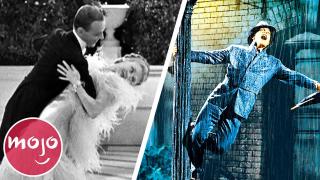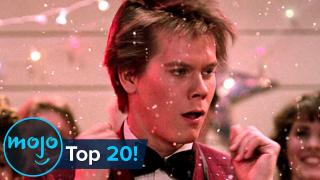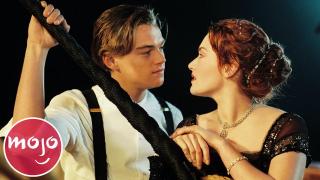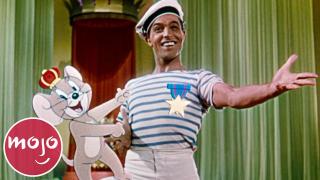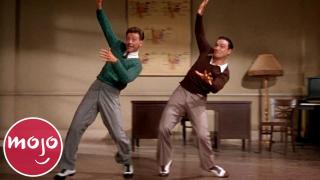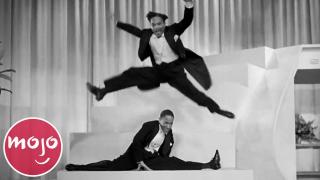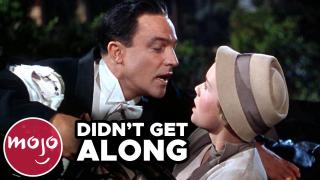Top 10 Dance Scenes That Defined Cinema
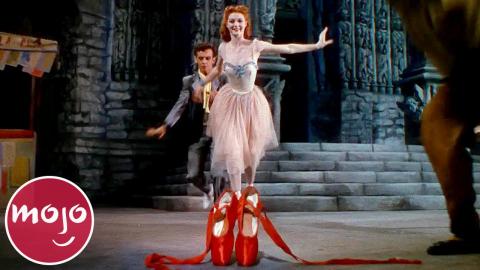
#10: “You’re the One That I Want” “Grease” (1978)
Top 50 Greatest Movie Dance Scenes of All Time
From the moment Danny sees Sandy in her new, greaser-girl get-up at the end of the movie, cinema history is made. Most of the choreography in “You’re the One That I Want” consists of Olivia Newton-John strutting around and John Travolta slithering along after her, with a couple of whoops and hollers along the way. But the chemistry between the two leads paired with their iconic hip swaying walk at the end has inspired many a copy over the years. Still, no homage will ever beat the exhilaration of the original.
#9: “Jumpin’ Jive” “Stormy Weather” (1943)
You’ve heard of Fred Astaire, you’ve heard of Gene Kelly. But two of the most prolific tap dancers of the Golden Age of Hollywood were the Nicholas Brothers. Fayard and Harold Nicholas were some of the best dancers of their day, but because they were African-American, they never got as much recognition as their white colleagues in the field. With that said, “Stormy Weather” has a performance from the duo that simply can’t be ignored. “Jumpin’ Jive” is an acrobatic, energetic flash dance for the ages. With this number, which some consider to be the best dance ever committed to screen, the Nicholas Brothers changed the game and inspired so many.
#8: “You Should Be Dancing” “Saturday Night Fever” (1977)
Top 20 Greatest Dance Scenes in Dance Movies
In the late 1970s, you couldn’t get more famous than John Travolta. Before “Grease” ‘78, he had another runaway hit with “Saturday Night Fever.” Travolta boogying along to “Night Fever” will forever be implanted in our memories, but nothing beats his solo performance to “You Should Be Dancing.” In this sequence, Travolta takes the floor by himself with a fun disco routine. Travolta’s moves, the twinkling lights, and the mesmerizing colors create a performance that’s impossible to tear your eyes away from. The movie itself is great, but Travolta and his dancing skills make it iconic.
#7: “(I’ve Had) The Time of My Life” “Dirty Dancing” (1987)
Top 10 Movie Couples Who Defined Cinema
Nobody puts Baby in a corner, and nobody performs a partner dance quite like Baby and Johnny. “Dirty Dancing” is one of the prime dancing movies of the 1980s, and there are plenty of great sequences to showcase just that. The one that still remains just as magical today is the final dance to “(I’ve Had) The Time of My Life.” Throughout most of the film, the music that’s played diegetically is from the 1960s. This song, however, is all ‘80s. By extension, the scene feels almost like a fairytale or a fantasy of epic, romantic proportions. Jennifer Grey and Patrick Swayze have amazing chemistry, and the “Dirty Dancing” lift has gone down in history as one of the best.
#6: Ceiling Dance “Royal Wedding” (1951)
Throughout his long, illustrious career, Fred Astaire came up with a lot of innovative ways to show the art of dance on screen. His decisions about how choreography would be filmed differed greatly from the Busby Berkeley musicals that were popular at the time. One of his most innovative decisions, however, came with the filming of 1951’s “Royal Wedding.” In it, Astaire’s character gets so excited that he dances on the ceiling. Literally. The scene was shot with Astaire in a rolling barrel set to give the illusion of dancing on the walls and ceiling. It was an extraordinarily original idea at the time, inspiring countless creatives in the decades since.
#5: The Ballet “The Red Shoes” (1948)
Top 10 Most Creative Classic Dance Scenes
The innovation of how ballet is used in film has evolved over the years. One of the most important films in its evolution is 1948’s “The Red Shoes.” From the amazing film team of Michael Powell and Emeric Pressburger, “The Red Shoes” follows a ballerina named Victoria Page who must choose between love and her career. The film includes a 17-minute-long ballet sequence that’s filled with symbolic visuals and metaphors for the story that unfolds. While some critics at the time found that the ballet wasn’t realistic, the film’s stature as one of the best of all time has only grown since its release. The beauty of this particular sequence is a large part of that.
#4: “The Aloof, the Heavyweight, the Big Finish” “Sweet Charity” (1969)
Top 20 Most Underrated Dance Scenes in Classic Musicals
Bob Fosse is one of the most innovative musical directors and creators of the latter half of the 20th century. His work began in earnest in the 1950s with stage musicals like “Damn Yankees.” Meanwhile, some of his best work can be found in numbers such as “Take Off With Us” in “All That Jazz”. Perhaps his most important piece of choreography, however, came in his first feature film, “Sweet Charity.” In “The Aloof, the Heavyweight, the Big Finish,” we see Fosse’s choreography completely untempered by a different director or other ideas. It’s pure Fosse through and through, and just the beginning of his time as an auteur.
#3: Mambo “West Side Story” (1961)
Choreography can do so many things in a film. When it comes to 1961’s “West Side Story,” it’s the main driver of the story. Directed by Robert Wise and choreographer Jerome Robbins, every single dance sequence in the film is immaculately staged and shot. We’ll never get over the swirling euphoria of “America,” but the dance at the gym is an absolute masterpiece. Wise and Robbins take us through so many different parts, from the mambo back-and-forth between the Jets and the Sharks, to Maria and Tony’s love at first sight moment. It’s a gorgeous feat of storytelling through dance, and perhaps hasn’t been replicated yet.
#2: “An American in Paris” “An American in Paris” (1951)
Top 10 Dance Scenes That Didn't Have to Go That HARD
Gene Kelly and the words “dream ballet” are just about synonymous when it comes to 1950s musicals. The one we probably think of the most is from the 1952 masterpiece “Singin’ in the Rain.” But Kelly’s most ambitious endeavor came a year earlier in the Vincente Minnelli-directed “An American in Paris.” The delightfully colorful film ends with a 17-minute, decadent dream ballet. The sets are extravagant, mimicking the work of French artists like Henri Rousseau, Pierre-Auguste Renoir, and Toulouse Lautrec. Meanwhile, Kelly’s choreography is a stunning mix of genres, and the dancers perform it beautifully. Before we unveil our top pick, here are a few honorable mentions. “Diamonds Are a Girl’s Best Friend,” “Gentlemen Prefer Blondes” (1953) Never Has an Outfit Had Such Staying Power “Jailhouse Rock,” “Jailhouse Rock” (1957) Elvis’ Most Famous Musical Sequence Warehouse Dance, “Footloose” (1984) Kevin Bacon Invented the Solo Strut Through a Warehouse “The Lady in the Tutti-Frutti Hat,” “The Gang’s All Here” (1943) The Busby Berkeley Experience at Its Finest Studio Duet, “White Nights” (1985) A Duet Between Two Masters of the Dance World
#1: “Singin’ in the Rain” “Singin’ in the Rain” (1952)
Top 10 Facts About Singin' in the Rain That Will Ruin Your Childhood
Throughout his long career, Gene Kelly made it a point to try new things when it came to committing dance to the screen. As far back as 1945, he was dancing with a cartoon mouse in “Anchors Aweigh,” predating “Mary Poppins” by almost 20 years . The most iconic, long-lasting image of Kelly is also one of his simplest. In the titular number of “Singin’ in the Rain,” Kelly proves that all you need to create an unforgettable dance number are some puddles and a beaming smile. Kelly exudes pure charm and joy in this dance number, splashing his way to our hearts and creating one of the most indelible images of American cinema. Which dance scene do you think had the biggest impact on cinema history? Let us know in the comments.


